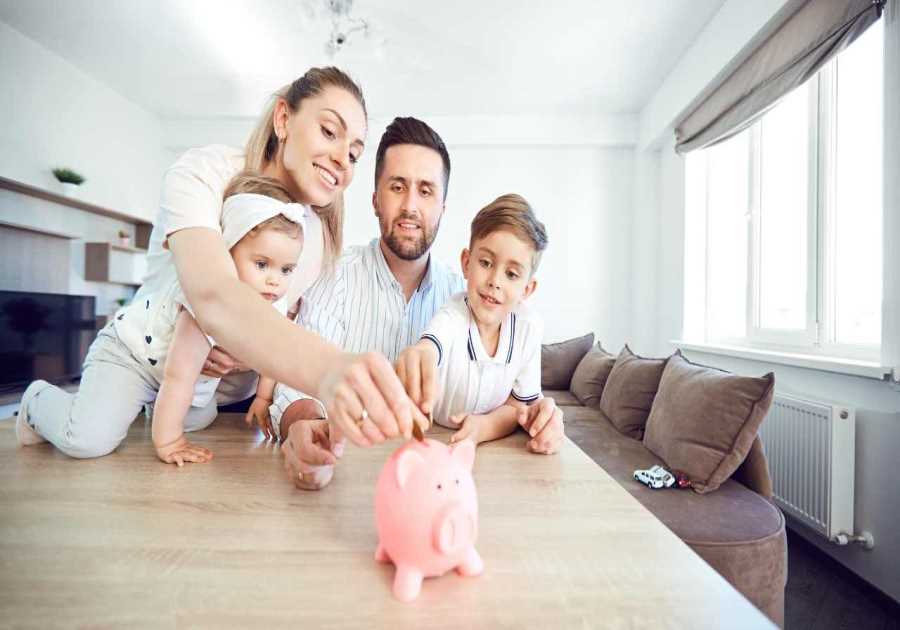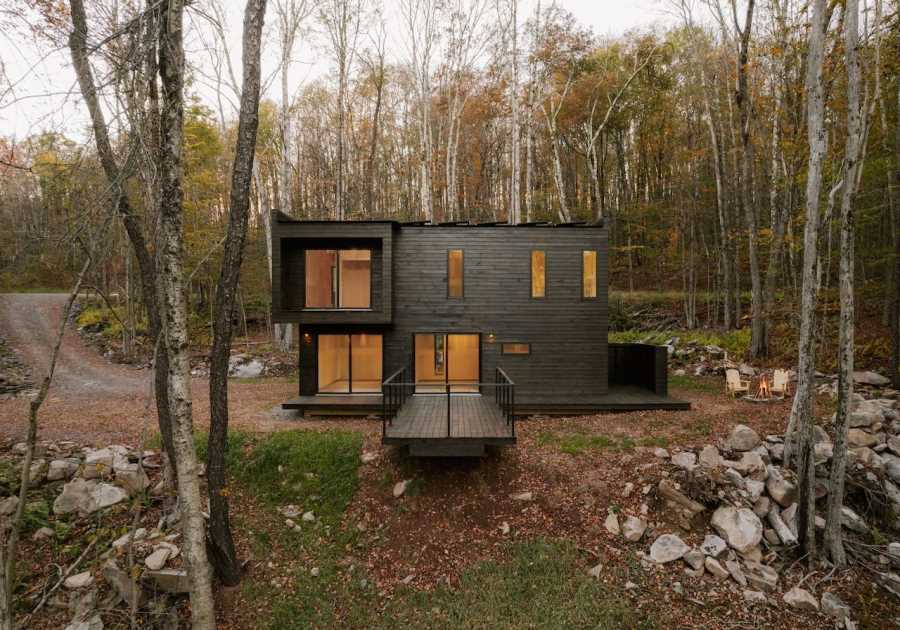These spaces used to be temporary solutions in moments of life upheaval. But as the world grows more uncertain, we’re keeping them for longer than ever.
When I was a bicycle commuter, I’d whizz through the streets to get to work faster than any bus—I was fast, fit, and in tune with the city. Then I moved, and cycling no longer made sense as a means of transport. But I’ve held on to that bike, with all the associated gear, unable to let go. It’s not really about the bike but the person I was when I rode it. Can I be this person again? Do I even want to? It’s an overwhelming thought, so I keep holding on to the bike—in perpetuity.
Stuff is never just stuff—our belongings become part of our identity, tying us to our past and future. "Humans survive on hope—thinking about who we want to be, whether it was somebody we were before, or an idealized version of ourselves," says Mary E. Dozier, an associate professor of psychology at Mississippi State University. But all our hopeful stuff has to go somewhere, and increasingly, that somewhere is a storage unit.
According to the Self Storage Association, over 11 percent of Americans now rent storage units, a number that’s been steadily rising in recent years; some surveys put the number as high as 40 percent. The addictive nature of TV shows like Storage Wars, now in its 16th season, has also contributed to normalizing the spaces as treasure troves that are just part of life now. There are currently over 50,000 storage facilities in the U.S., and the over $50 billion market is expected to just keep growing.
We’ve always turned to storage when our worlds are in flux; the four Ds driving the sector are downsizing, decluttering, divorce, and death. But in recent years, industry reports show we’ve started holding on to our storage units for longer—months, or even years. Maybe you have a unit because the economy has scuppered plans for moving after the baby, after the divorce, or after returning from military deployment. There’s been so much global and political uncertainty in recent years and when things are overwhelming, the best time to deal with something that’s not urgent is later.
So if you just can’t seem to get around to sorting out the unit with that bulky inheritance, the ramshackle starter furniture, or the high school trophy collection, it may actually be an emotional protection mechanism. Dozier explains that sorting through a storage unit can be extremely draining on our cognitive resources. "If there’s a really stressful event, your brain is like, We’re going to entirely shut down and just make everything disappear for you. The brain just says stop—no more decisions today."
But it’s never been more expensive to defer those decisions. Storage units used to be pretty affordable, but rents have been rising especially since the pandemic: "Back in the day, a storage unit was $50, but now, even a typical size unit can be $200 a month. Times that by a year, by ten years, and it adds up," says Ben Soreff, a professional organizer with House to Home Organizing in Connecticut. Holding on to stuff isn’t really about monetary value, nor is it even really about emotional attachment, says Soreff, who defines clutter as postponed decisions. "It’s really about time and manual labor"—it’s just hard work to sort through stuff.
But what’s really sitting in those blank boxes? We spoke to four people about what they keep—or kept—in theirs, and found that beyond economic circumstances are stories of family, hard-won life lessons, love and loss.
"Everyone I’ve ever loved is in those storage units." –Suzy Chase, host of Decorating by the Book, New York City
I have two fairly large storage units in Kansas City that I’ve had since 2008. I’m the last one in my family who’s alive—my three brothers are gone, my parents are gone. So all the family heirlooms have come to me.
I live in a small two-bedroom apartment in the West Village with my husband and son. Our apartment is full of things I grew up with—everything I could fit here. I have this sofa here that my mom got in 1982, it’s Ralph Lauren plaid. My childhood was fraught because my older brother had schizophrenia, the cops were there all the time and no one knew how to handle it. When I was little I would cry on this sofa, but now I’ve put new meaning into this couch. It makes me so happy when I see my husband sitting on it, and my son laying on it.
In the storage units there’s a lot of antiques and big wooden furniture; it’s a full house worth of stuff. My mom had a lot of classic striped ticking and French blue toile. There’s the piano my mom got from her parents when she was 10 years old that she wanted my son to have. There’s the sword from the Battle of Gettysburg that my dad got from his grandfather who fought in the Civil War.
My sweet husband pays for the storage units; I think it’s around $500 a month. He knows how much this means to me. Eventually, I want to move to Kansas City and put it all in a house. But there’s a dark side to that too, because once my son has left home and I have all my stuff out of storage, that will be the signal that I’m the next to go. Is that weird?
Everything in storage is the story of my family, and I feel responsible for that story. It feels like a privilege, but it also feels like a weight. There’s a lot of emotion with that. I don’t like to go into the storage units. It feels like when I open the door, I’m opening up to grief.
"Bankruptcy made me realize I can manage with so much less." –Polly Arrowsmith, marketing executive, London
I lost my home after I was made bankrupt. I’d lived in an eight-room house in London with my former partner for about 15 years, and I absolutely loved that house. But then I lost my business and because of high interest rates, a small debt bloomed and bankruptcy was forced on me. It was horrific and chaotic. I’ve had my storage unit since 2021, as I’m in a small flat now.
I’ve had to downsize substantially, so a lot of my things are in storage. I have a lot of nice furniture, things that were bought to last. I have a Knoll Saarinen table and chairs, and handmade Shaker furniture. It’s maybe £30,000 to £40,000 worth of stuff.
The unit costs me £275 per month. I really should think about what I want to keep; if I carry on much longer, the cost of storage will outweigh the value of the goods. But there’s an awful lot in that unit—wardrobes, dressers, big paintings with nice frames. All my nice kitchenware, my Finnish Iittala glassware. The thing I miss the most are my Shaker bedside tables—they’re cherrywood, really beautiful.
I don’t go to the unit very often as it brings back the pain of losing my home. But it brings back good memories as well. I had dinner parties around that table, and I used to have friends and family come and stay all the time.
I’m expecting to buy a bigger house again in future and then I can have my furniture back. But living without my things has made me realize I probably had too much space before. I’ve been getting rid of a lot, and selling things on eBay. I really just want my things to go to a good home.
Losing my home was painful, but I have to move forward. If I spent too much time looking backwards it would probably make me very ill. My health is so much more important than things. I used to think I could shop myself into happiness, but I don’t need to be such a consumer anymore. I’ve been blessed to have had that house and those beautiful things, really.
"A storage unit is ridiculous, but I want my house to feel calm."–Kate Smith, interior designer and founder of k.smith x design studio, Door County, Wisconsin
While I wouldn’t say I’m a minimalist, I certainly don’t like clutter. I like everything to be visually clean and I don’t like to have things that aren’t useful. When I designed our house, I kept all that in mind. But my husband and daughter love having things.
I live in a small town in Wisconsin where we have five acres of land. Our house is around 3,000 square feet so it’s sizable, with a two-and-a-half car garage. I’m fortunate that my husband does all the maintenance on our house and cars, but it means he has a lot of tools.
We rent a 20-by-12-foot storage unit and we toggle things back and forth depending on the season. Right now in our garage we have our bicycles, a riding mower and all our yard equipment. When winter comes, we’ll move that and the beach gear up there and bring down the shovels and the snowblower. We’ve outfitted the unit with shelving to hold our camping equipment.
When I moved here 15 years ago I learned that everyone has a storage unit for off-season items, and I thought it was just ridiculous. And now I have one too. Our area often loses power for days at a time, so we have to keep a lot of backup items. I try to manage the amount of debris in our lives, and it’s nice to have somewhere for it to go.
We only pay about $500 a year for the unit, but it’s not heated or critter-proof. We could build a nice storage structure on our land but it would cost at least $25,000—it’s a constant conversation, but for now it’s just easier and cheaper to have the unit.
There’s so much uncertainty in the world, but I tell myself I can only manage the things that are within my realm. I just have no desire to have any mental or literal baggage. My mom has tried to hand off dishware to me, but I just don’t want a 100-piece setting with a plaid gravy boat, bought from JCPenney in 1987. I’m just not going to use it. When I’m in my space, I just want to feel calm. I don’t want to have a bunch of stuff around.
"The fire took every physical thing I had to remember my childhood." –Katherine Coffey, graphic designer, Detroit, Michigan
I got my storage unit in 2020 when I had to empty my parents’ house at short notice. I kept only the things most meaningful to me—it was like a capsule of my identity. Then this June, the storage facility burnt down and it was all reduced to soggy ash.
I’ve lived in the U.S. for 17 years but I’m originally from Norfolk in the U.K., where my parents still live. They are elderly and my dad’s disabled, and they had to move into assisted living when the pandemic hit. I couldn’t travel to the U.K. because of the border restrictions, so a friend helped me. I gave her a list describing everything I wanted to keep, like my grandmother’s cutlery, a suitcase full of photographs, some antique books, and a Victorian chair. I will always be grateful to her. It was such a relief to know everything was safe.
I was going through a divorce at the time and I was moving around a lot. My life was really hectic and I kept thinking I would sort out the storage unit once I was settled. But I never actually visited the unit, which I paid about £3,800 for over the years before the fire. And because it was arson I wasn’t entitled to any compensation, and I didn’t have any insurance. Not that anything was worth very much money—it wasn’t about that.
I’d saved all my dad’s artwork; he had a lot of drawings, paintings and prints. I have a really difficult relationship with my dad and I felt like keeping his artwork could be a way to make peace with him. There was a portrait he’d done of my mother on her wedding day, and I thought I’d have that on my wall one day. Once my parents are gone, I will only have a handful of photos left. Several of my dad’s paintings were on the wall all through my childhood, and I can picture them in my mind right now. But I can’t ever look at them again.
Top illustration by Joan Alturo.
Related Reading:
My 2025 DIY Resolution Is to Create the Storage Room of My Dreams
A Bibliophile Couple’s Brooklyn Apartment Finds a Smart Storage Solution for More Than 1,000 Books
Read More
By: Jessica Furseth
Title: The State of the Storage Unit
Sourced From: www.dwell.com/article/the-state-of-the-storage-unit-d5a6e816
Published Date: Wed, 15 Oct 2025 15:53:56 GMT
.png)





